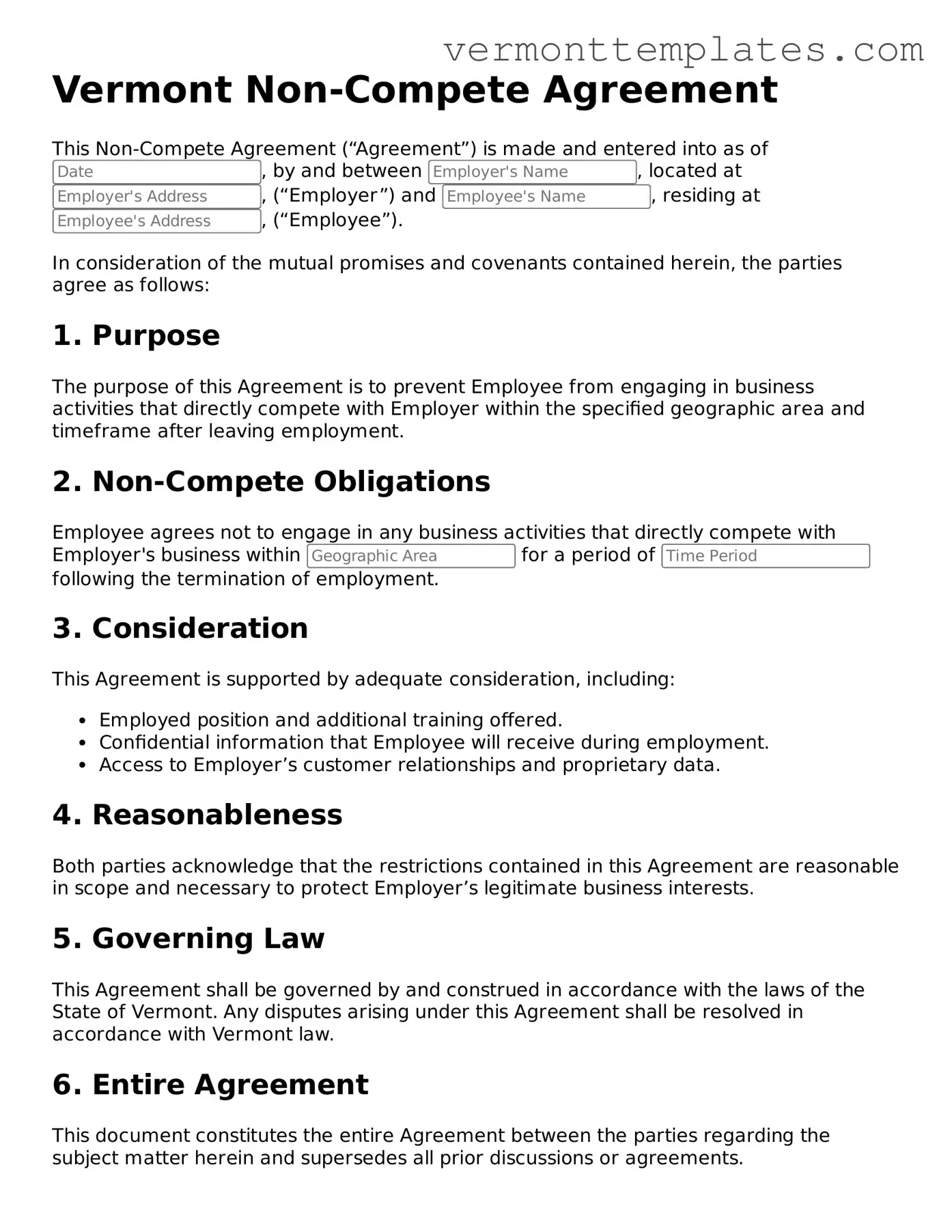Legal Non-compete Agreement Template for Vermont
A Vermont Non-compete Agreement form is a legal document that restricts an employee's ability to work for competitors after leaving a job. These agreements aim to protect a business's confidential information and competitive advantage. Understanding the specifics of this form is essential for both employers and employees navigating the employment landscape in Vermont.
Open Non-compete Agreement Editor
